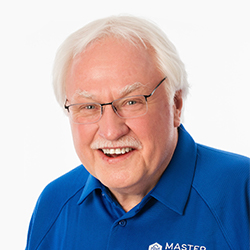Get unique, complex parts easily. No matter your requirements, Chaoyi Spring creates hard-to-produce coil springs and wire forms.
Let us help you create the custom wire form you need, from S-hooks and J-hooks to utility hooks and more.
We work closely with customers across a wide range of industries, helping them design and manufacture made-to-order parts.
Why choose Chaoyi Spring? We prioritize customer-focused collaboration, modern equipment and the latest technology to make your parts per print.
Find the information and guidance you need, from measuring a spring to learning about materials, placing an order and much more.
Springs, those ubiquitous coils of metal that seemingly defy gravity and return to their original shape, are marvels of engineering. They are integral to our everyday lives, from the simple


Springs, those ubiquitous coils of metal that seemingly defy gravity and return to their original shape, are marvels of engineering. They are integral to our everyday lives, from the simple act of opening a door to the complex mechanisms of cars and machinery. But have you ever wondered what truly happens when you compress a spring? This article delves into the fascinating world of spring compression, exploring the scientific principles behind this seemingly simple action.

At the heart of understanding spring compression lies Hooke's Law, a fundamental principle of elasticity. This law, formulated by the brilliant English physicist Robert Hooke in 1676, states that the force exerted by a spring is directly proportional to its displacement from its equilibrium position. In simpler terms, the more you compress a spring, the greater the force it will push back with.
Mathematically, Hooke's Law is expressed as: F = -kx, where:
The spring constant, k, is a crucial factor in determining how much force a spring will exert for a given compression. A stiffer spring will have a higher spring constant, meaning it will require more force to compress it by the same amount. Think of it like this: a strong, thick coil spring would have a high spring constant compared to a thin, flimsy one.
Compression of a spring is not just about force; it's also about the storage of energy. When you compress a spring, you are doing work on it, and this work is stored as potential energy within the spring. This potential energy is released when the spring is allowed to expand, converting back into kinetic energy.
Imagine you're pushing down on a spring. You are essentially storing energy in the spring's distorted configuration. When you let go, the spring pushes back, converting the stored potential energy into kinetic energy, propelling whatever is attached to the spring. This is the fundamental principle behind many spring-powered devices, from toys to complex machinery.
The material from which a spring is made plays a significant role in its compression behavior. The stiffness of the spring is not just about its shape or coil geometry but also about the material properties of the spring wire. Spring steel, with its high elasticity and resilience, is the most common material for springs due to its ability to withstand repeated compression cycles without permanent deformation. Other materials, like phosphor bronze and beryllium copper, are used for specific applications that require corrosion resistance or electrical conductivity.
A spring made of a material with a high Young's modulus, a measure of its stiffness, will be more resistant to compression than a spring made of a material with a lower Young's modulus. This is why steel springs are often preferred for high-load applications.
Springs come in various shapes and sizes, each designed for specific applications. Compression springs, the focus of this article, are just one type. Other common types include tension springs, torsion springs, and leaf springs.
Compression springs are used in a wide range of applications, from everyday items like retractable pens and door closers to complex mechanical systems in automobiles and machinery. Their ability to absorb shock, store energy, and provide a consistent force makes them invaluable in numerous industries.
The compression of a spring is not just a scientific curiosity. It has real-world implications in numerous fields, such as:
The compression of a spring, a seemingly simple act, unveils a fascinating world of physics, engineering, and material science. From the fundamental principles of Hooke's Law to the practical applications in various industries, springs continue to be indispensable components in our modern world. Next time you encounter a spring, remember the intricate science behind its simple yet powerful action.
As we have explored, the compression of a spring is a fascinating interplay of physics and engineering. It's a reminder that even the simplest actions can hold hidden complexities and that understanding these complexities can lead to innovative solutions and advancements in various fields. From the springs in our everyday devices to the advanced mechanisms in high-tech machinery, these humble coils continue to shape our world in countless ways.
Browse some of the custom wire forms and springs that we manufacture. Don’t see what you need? We specialize in made-to-order products that meet your application requirements.
Visit Our GalleryNeed a custom wire form or coil spring? We make it work. Fill out the contact form and a representative will respond within 1 business day. If you have a PDF or CAD file, you can submit to request a quote.